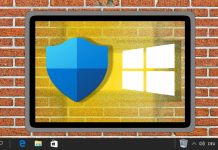In an announcement, the company also reconfirmed how its Windows 10 targeted channel updates are being removed. Rolling out Windows 10 version 1903 or the corresponding Windows Server requires IT admins to make some base level changes. Microsoft says the adjustments are located in System Center Configuration Manager (SCCM) version 1902 and only need to be performed once. SCCM user need to be on this version or later to be able to pull in the Windows 10 version 1903. Joe Lurie, a product marketing manager for Windows Commercial Marketing, explains the steps to take to allow the updates: “With Windows 10, version 1903, we are introducing new product categories to enable future support for the Unified Update Platform (UUP) for on-premises management solutions, which provides improved delivery technologies for Windows updates. A configuration change is, therefore, required for environments running the latest public release of Configuration Manager, as well as for environments using WSUS (without Configuration Manager) for updates.” If you are unfamiliar with the Unified Update Platform (UPP), The company debuted the Unified Update Platform (UUP) in November 2016. Microsoft developed the platform to reduce the size of updates and to make finding new updates more efficient. This is particularly important for feature updates.
One Time
As mentioned, users only need to make the adjustments once before rolling out Windows 10/Server version 1903. “Future versions of Windows 10 will not be listed individually. For now 1903 is because we are changing the way updates are delivered. But that change will stick on future versions, so there won’t be a need to list each one. For Server, we already list them all individually so this really isn’t a change in the way you select to receive updates for server, but the delivery of them is changed in Server as well.”




